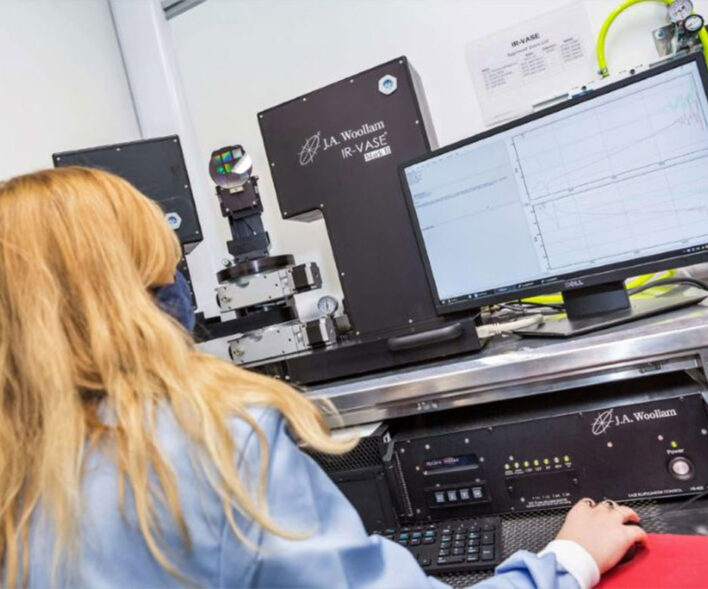Spectroscopic ellipsometry
Spectroscopic ellipsometry (SE) is a highly sophisticated and non-destructive metrology tool for determining the optical constants of materials. iSMART is equipped with a J. A. Woollam Infrared Variable Angle Spectroscopic Ellipsometer (IR VASE II), capable of providing the optical constants of materials in the extended spectral range from 1.6 – 40 microns.
Only two ellipsometers of this type currently exist in the whole of the UK, with one such system being located at MTIF which is available for contract development work and academic partnership for all UK industry and any Research institutes. The IR VASE II was supplied by Quantum Design UK and Ireland Ltd. who are the official representatives of J. A. Woollam inc. Quantum Design UK and Ireland Ltd. and MTIF have entered into a partnership to provide access to potential users to view, and measure trial samples on, the J. A. Woollam IR VASE II Spectroscopic Ellipsometer on an ad hoc contract basis.
Our partnership with The University of Nottingham (contact person: Dr. Christopher Mellor) allows for this spectral range to be extended further, using a J.A. Woollam M-2000DI spectroscopic ellipsometer, to include the near infrared, visible and ultraviolet wavelengths (1.69 – 0.193 microns). This combined capability, offers one of the widest spectral ranges available world-wide (0.19 – 40 microns). By extracting the exact optical constants, we also enable the determination of material properties such as charge transport (mobility, doping concentration, resistivity), lattice vibration (phonon absorption) and band structure (via interband transitions and band gaps).
These fundamental properties of semiconducting materials are key parameters for opto-electronic applications. In a recent work, Dr. Nikolaos Kalfagiannis and co-workers from Université de Poitiers, Sheffield Hallam University and The University of Nottingham, employ SE in the extended spectral range (0.2 – 40 microns) and develop the methodology for the accurate determination of the free carrier transport properties of transparent conductive oxides and discriminate between the different scattering mechanisms (grain boundary scattering, inter-grain scattering and ionised impurity scattering) in an effort to clarify the conduction mechanisms of such materials and define their range of application.
